For my college project I need to identify a species of a plant from plant leaf shape by detecting edges of a leaf. (I use OpenCV 2.4.9 and C++), but the source image has taken in the real environment of the plant and has more than one leaf. See the below example image. So here I need to extract the edge pattern of just one leaf to process further.

Using Canny Edge Detector I can identify edges of the whole image.

But I don't know how to proceed from here to extract edge pattern of just one leaf, may be more clear and complete leaf. I don't know even if this is possible also. Can anyone please tell me if this is possible how to extract edges of one leaf I just want to know the image peocessing steps that I need to apply to the image. I don't want any code samples. I'm new to image processing and OpenCV and learning by doing experiments.
Thanks in advance.
Edit
As Luis said said I have done Morphological close to the image after doing edge detection using Canny edge detection, but it seems still it is difficult me to find the largest contour from the image. Here are the steps I have taken to process the image
Apply Bilateral Filter to reduce noise
bilateralFilter(img_src, img_blur, 31, 31 * 2, 31 / 2);Adjust contrast by histogram equaliztion
cvtColor(img_blur,img_equalized,CV_BGR2GRAY);Apply Canny edge detector
Canny(img_equalized, img_edge_detected, 20, 60, 3);Threshold binary image to remove some background data
threshold(img_edge_detected, img_threshold, 1, 255,THRESH_BINARY_INV);Morphological close of the image
morphologyEx(img_threshold, img_closed, MORPH_CLOSE, getStructuringElement(MORPH_ELLIPSE, Size(2, 2)));
Following are the resulting images I'm getting.
This result I'm getting for the above original image

Source image and result for second image
Source :

Result :

Is there any way to detect the largest contour and extract it from the image ?
Note that my final target is to create a plant identification system using real environmental image, but here I cannot use template matching or masking kind of things because the user has to take an image and upload it so the system doesn't have any prior idea about the leaf.
Here is the full code
#include <opencv\cv.h>
#include <opencv\highgui.h>
using namespace cv;
int main()
{
Mat img_src, img_blur,img_gray,img_equalized,img_edge_detected,img_threshold,img_closed;
//Load original image
img_src = imread("E:\\IMAG0196.jpg");
//Apply Bilateral Filter to reduce noise
bilateralFilter(img_src, img_blur, 31, 31 * 2, 31 / 2);
//Adjust contrast by histogram equaliztion
cvtColor(img_blur,img_equalized,CV_BGR2GRAY);
//Apply Canny edge detector
Canny(img_equalized, img_edge_detected, 20, 60, 3);
//Threshold binary image to remove some background data
threshold(img_edge_detected, img_threshold, 15, 255,THRESH_BINARY_INV);
//Morphological close of the image
morphologyEx(img_threshold, img_closed, MORPH_CLOSE, getStructuringElement(MORPH_ELLIPSE, Size(2, 2)));
imshow("Result", img_closed);
waitKey(0);
return 0;
}
Thank you.

